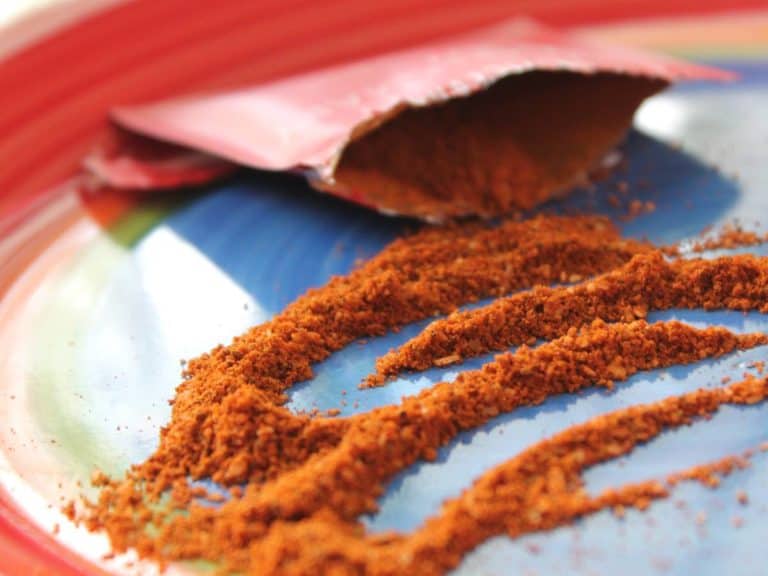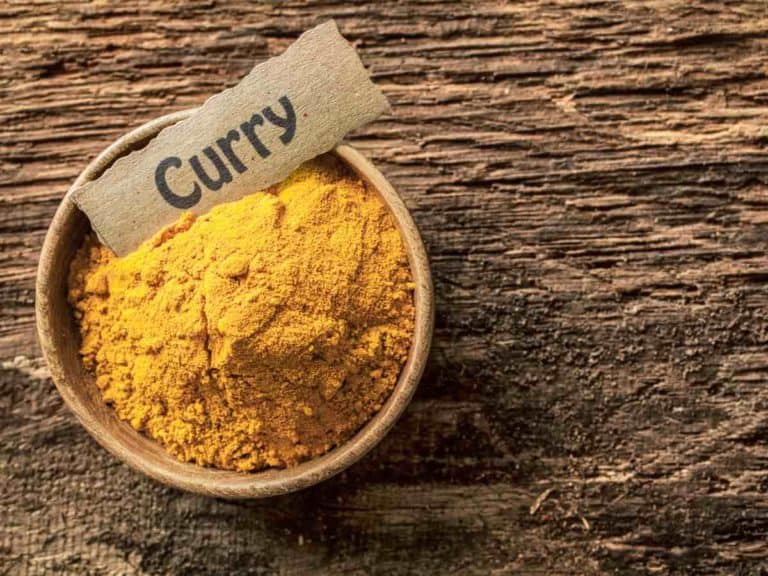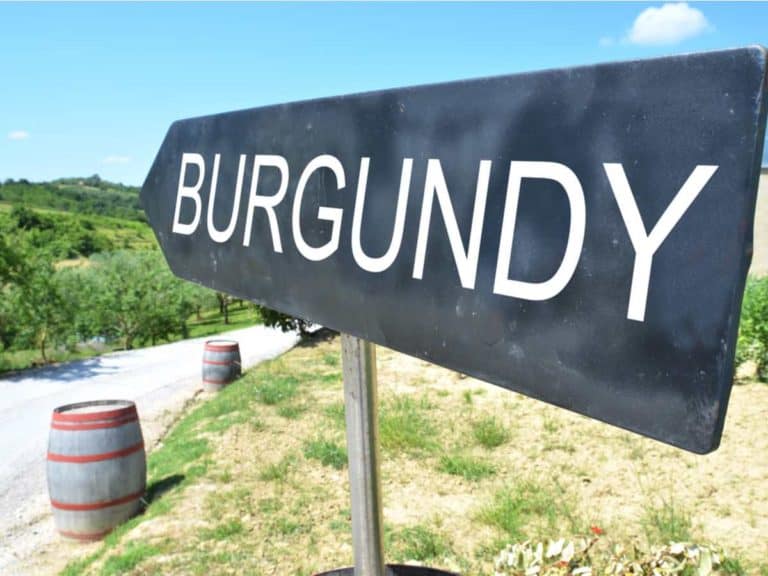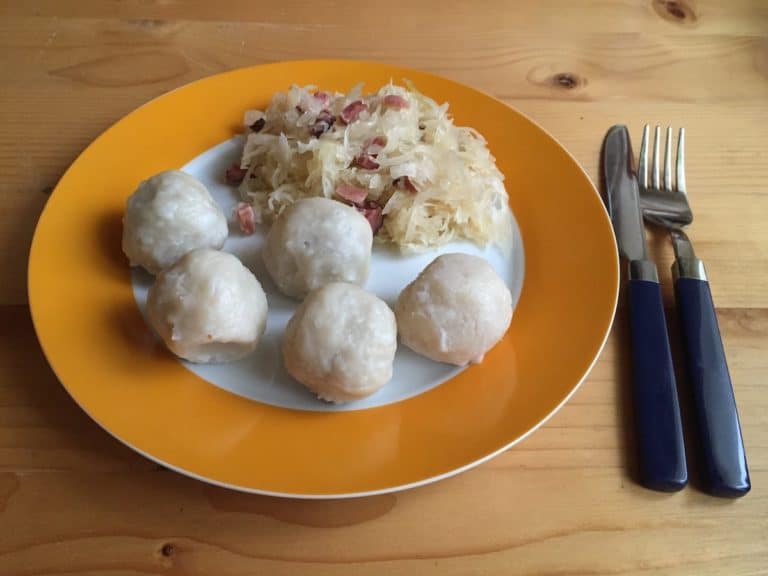How to Keep Pasta Warm After Cooking
There are two ways to serve pasta dishes: warm or cold. The tricky one is warm or hot pasta. The reason they’re tricky is you have to keep them warm. In this article, you’ll learn how to keep pasta warm after cooking.
The easiest way to keep pasta warm after cooking is to use a slow cooker. Other ways are using the double boiler/water bath method and using a chafing dish. If all other methods are not doable for you, then you can simply reheat your pasta.
There are also other ways on how to keep pasta warm after cooking. But these ways may not be as effective as the ones mentioned above. Keep reading below to know more about these ways in detail.
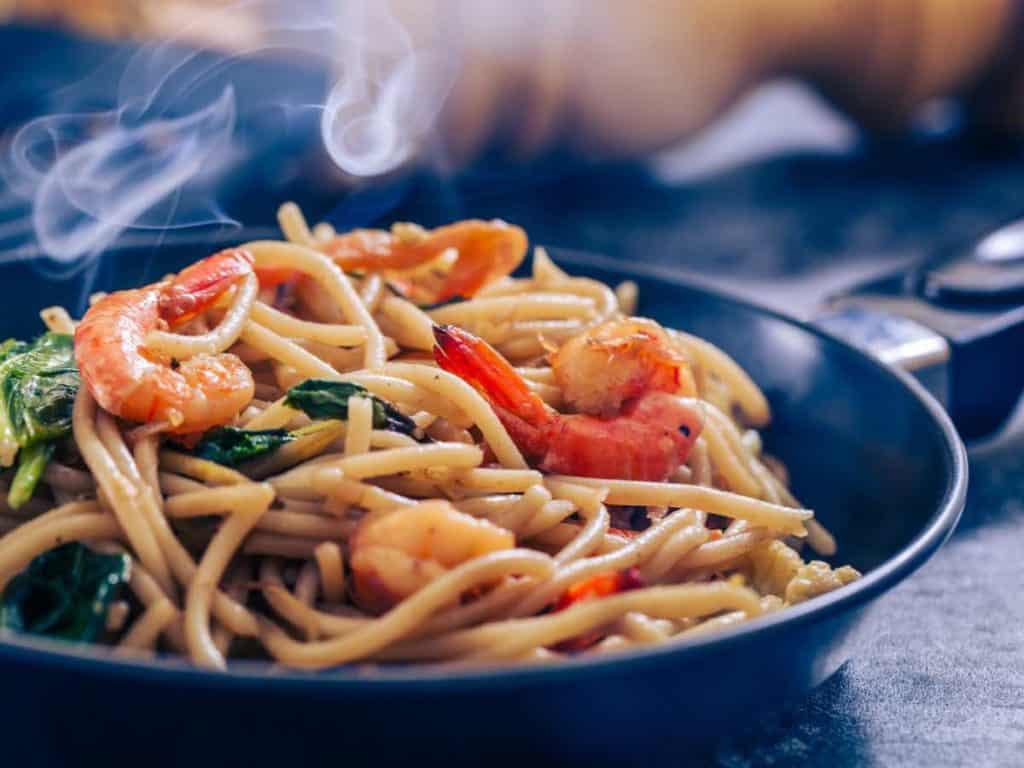
Food Safety
Before you begin on how to keep pasta warm after cooking, you need a quick lesson on food safety. Keeping food warm after cooking can keep it fresh and delicious, but up to a point. It’s unsafe to keep food out for long periods of time.
It’s even more unsafe to keep warm food out. Eventually, microorganisms will proliferate on the food. If the food is warm, the microbial proliferation will be faster.
The US FDA and other groups recommend you consume food within 2 hours of preparation. You can still eat your food after 2 hours and it can still be safe. But with time, the risks grow.
The best-case scenario is your food only spoils and gets some funky flavors. Natural chemical reactions happen over time that change the flavors. Microorganisms can also proliferate and spoil food. The worst-case scenario is pathogenic microorganisms proliferate.
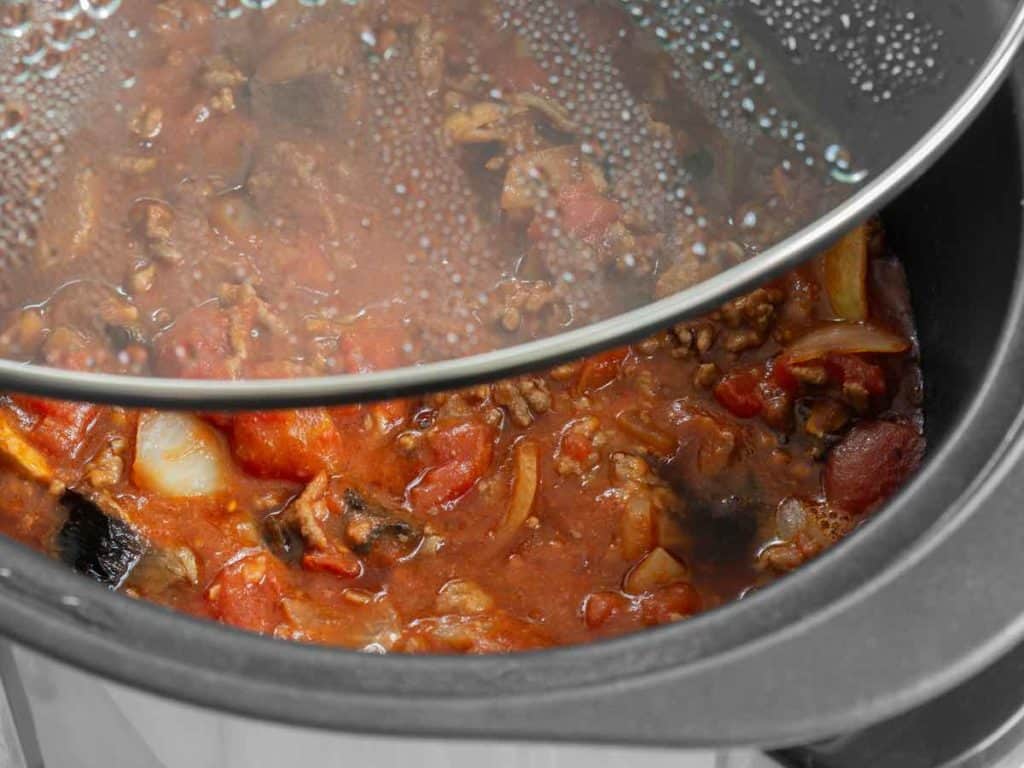
Slow Cooker
A slow cooker is also called a crock-pot, though this is the name of the brand that first made it. A slow cooker does exactly what its name says: It cooks food slowly. It does that by cooking food at lower or simmering temperatures.
A benefit of slow cookers is you can set it up at the start of your day or at the end of the night. You can forget about it while it’s cooking. Then by dinner or breakfast the next day, you have a freshly cooked meal.
Another benefit of slow cookers is it can keep the food warm or hot for long periods of time. But the food is hot enough to keep microorganisms away.
Many pasta dishes are served with a sauce. You can cook the pasta sauce in the slow cooker. You prepare the pasta sauce as you normally would. But instead of cooking it in a pot or saucepan, you put it in the slow cooker.
Whichever cooking setting you choose will depend on you. You may be making pasta for dinner and you’re preparing the sauce in the morning. If so, then set the slow cooker on the lowest setting. The sauce should be done within 8 hours. Of course, the specific cooking time will depend on your slow cooker.
You can half-cook the pasta separately. You cook the pasta like you usually do, but you cut the cooking time short, so the pasta isn’t fully cooked. How quickly you need to cut the cooking time depends on the type of pasta you have and your altitude.
If you’re not sure, you can just check your pasta. You can check by biting into a piece of pasta (after cooling it, of course). The piece should give, but the center should still be raw.
You then put the half-cooked pasta into the slow cooker with the sauce. Do it within the last hour or half-hour of cooking. Once the dish is done, you set the slow cooker on “warm” until it is time to eat.
Related Article: Is Pasta Good For Building Muscle?
Double Boiler/Water Bath
Get a large deep pan or a large pot. Fill it halfway with water and bring it to a simmer. Get another pot, pan, or even a bowl. Place your pasta in this second vessel.
Then place the second vessel with the pasta on the simmering water. Cover the pasta so it doesn’t lose any moisture. Stir the pasta every now and then to make sure the heat is evenly distributed.
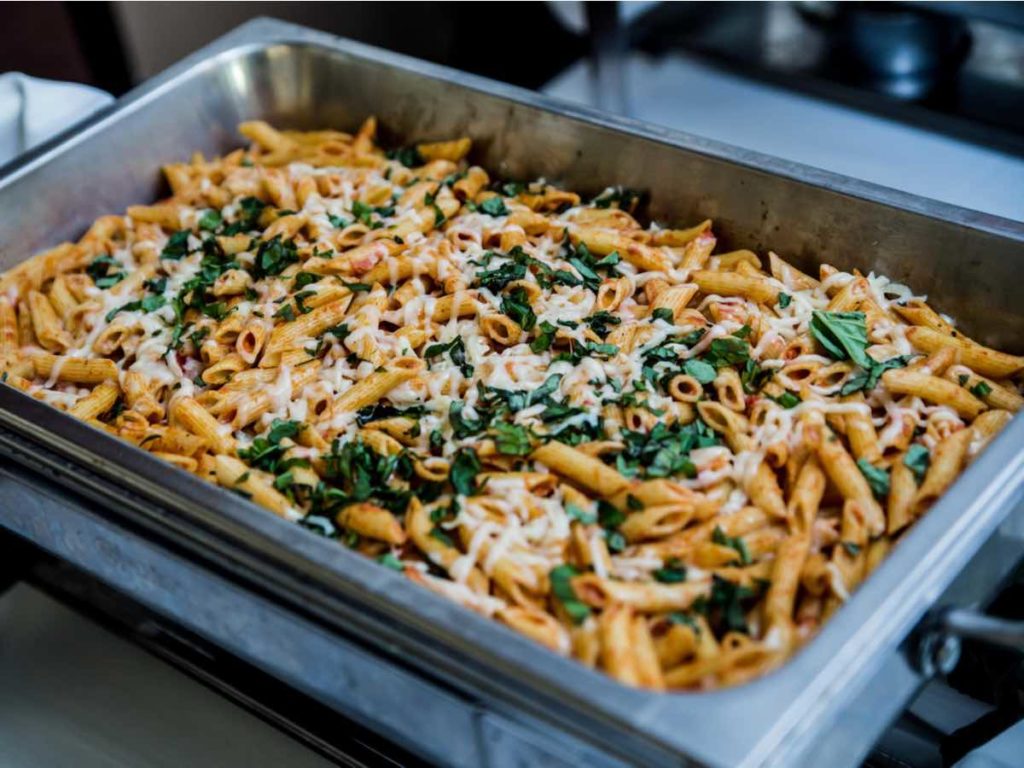
Chafing Dish
Chafing dishes are those pans you see at a buffet or catered event. They are used to keep food hot or warm throughout the event.
In general, a chafing dish is a metal pan with a stand and on a burner. It has 6 main parts. These parts are the food pan, water pan, rack, fuel can, fuel holder, and lid.
You place the fuel holders onto the rack. You place the fuel can on the fuel holders. You put the water pan on the rack and fill it with scalding water, so be careful when you do this step.
Most chafing dishes require 1⁄2 inch (1.3 cm) of water on the water pan.
Afterward, light the fuel. The hot water is what will keep the food hot. The burning fuel is what will keep the water hot.
Next, you place the food pan with the freshly cooked hot food on the water pan. The food must already be cooked and hot. The purpose of the chafing dish is to keep food hot, not to cook it. Lastly, you place the lid.
An important thing to remember about a chafing dish is to set it up at the place where the food will be served. Remember, people will go to the chafing dish to fix their plate. Then they’ll go to their table.
So it will be a hassle if the chafing is set up far away. Moreover, make sure your chafing dish is on a level and sturdy surface, like a strong table. You have an active flame on a chafing dish. So you don’t want that chafing dish to topple and cause a fire. And since you have an active flame, keep unnecessary flammable objects away.
So if you have a chafing dish, prepare your pasta like you normally would. Then place the pasta on the set up chafing dish. The thing about a chafing dish, though, is it can dry out the pasta.
When the pasta dries, it can also stick on the food pan. You can work around this problem by drizzling a bit of olive oil on the pasta. Every now and then, stir the pasta so the heat is evenly distributed. Moreover, keep the pasta covered when no one is getting any. The lid will keep moisture from escaping.
There’s another way to keep your pasta from becoming sticky as you serve it. Before you mix it with the sauce, rinse your pasta. This step will wash off excess starch on the pasta surface.
Related Questions
Can you use insulated food containers on pasta?
The methods you just read keep pasta warm by applying heat to it. But, you can still keep pasta warm by preventing heat from escaping for as long as possible. To do so, you use insulated containers. There are plenty available on Amazon, but don’t expect the results to be as good as the methods above.
Can you reheat pasta?
You can reheat pasta using a microwave. Add a bit of water on the pasta to keep it moist after microwaving. Microwave at intervals of 30 to 60 seconds. Stir after every heating to evenly distribute the heat. You can also use the double boiler method above to reheat a lot more pasta.
![How to Broil Without a Broiler [Creative Methods]](https://foodwine.com/wp-content/uploads/2021/12/broil-chicken-j1216-768x576.jpg)
